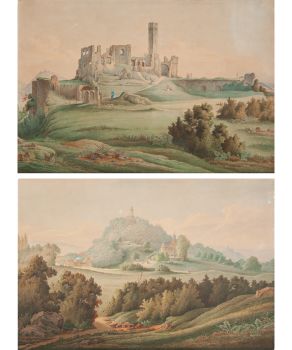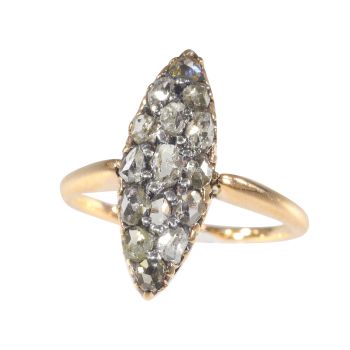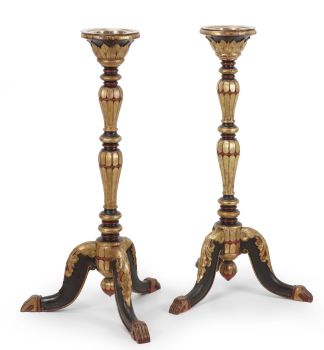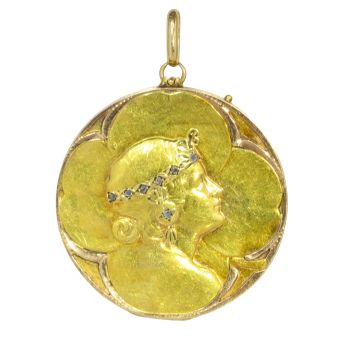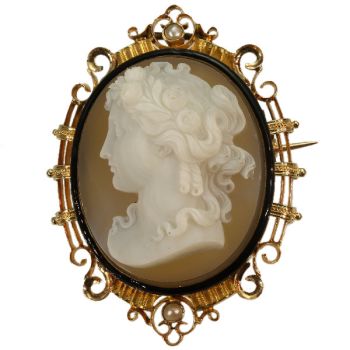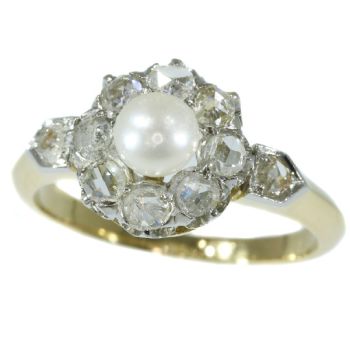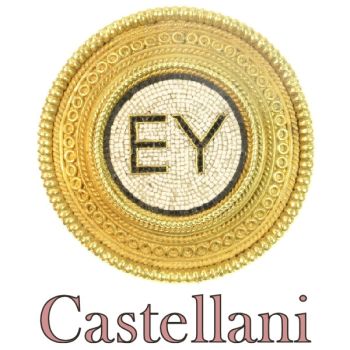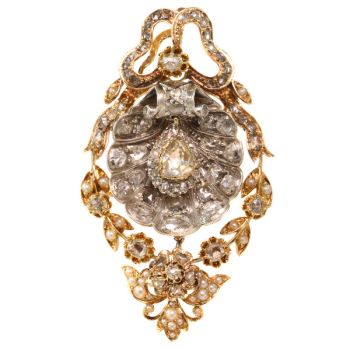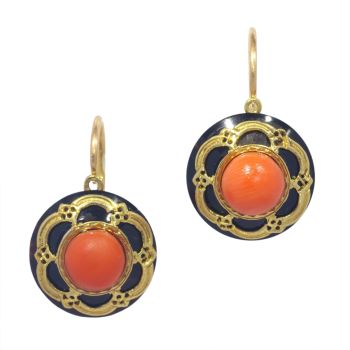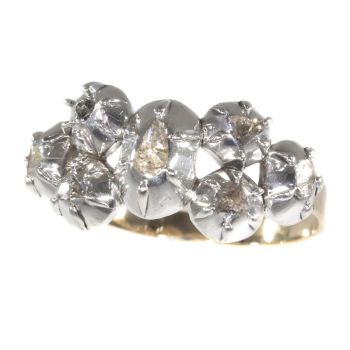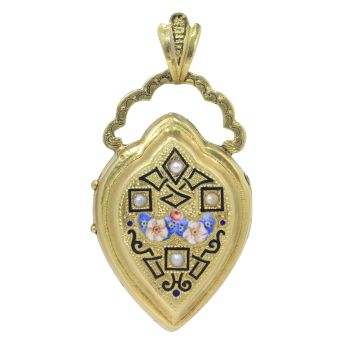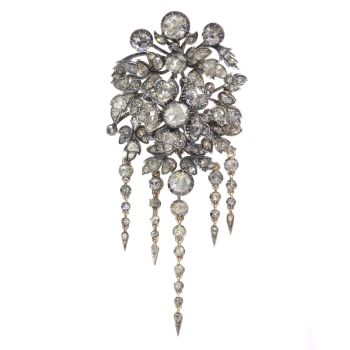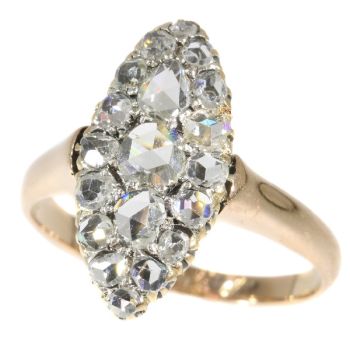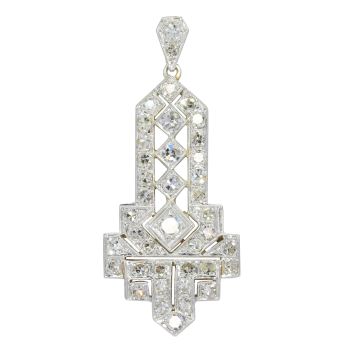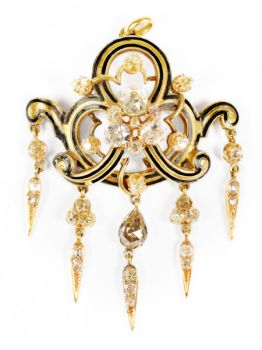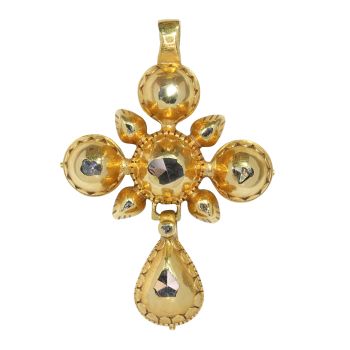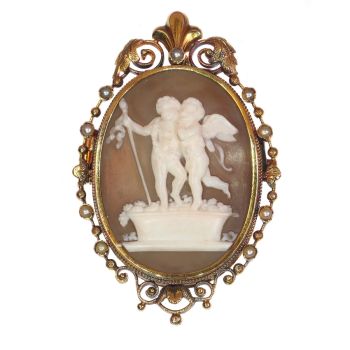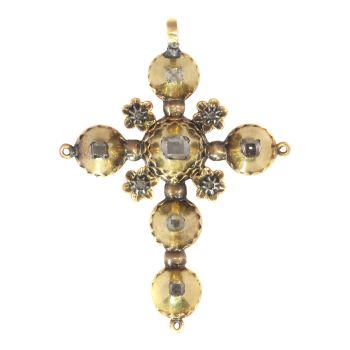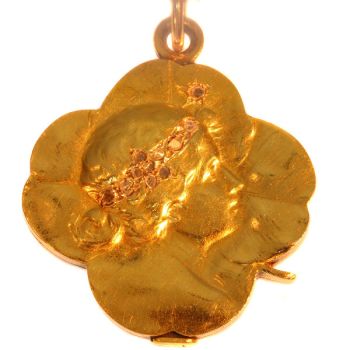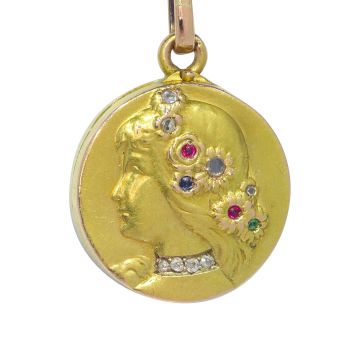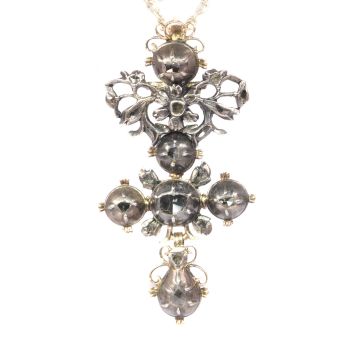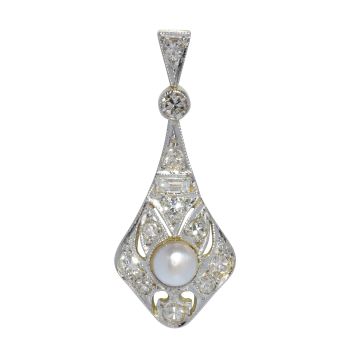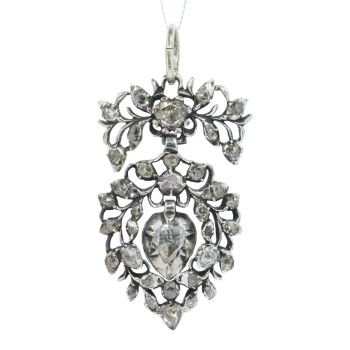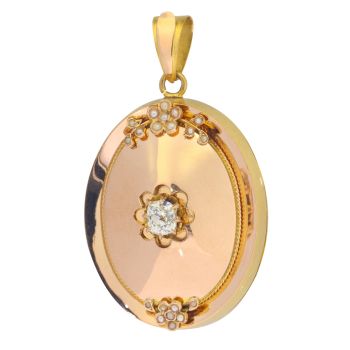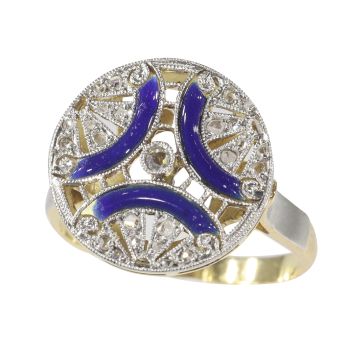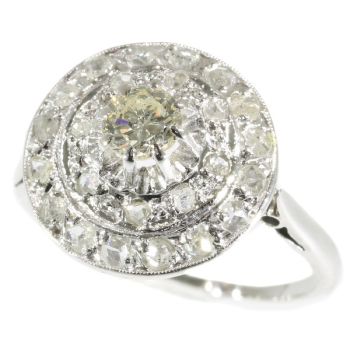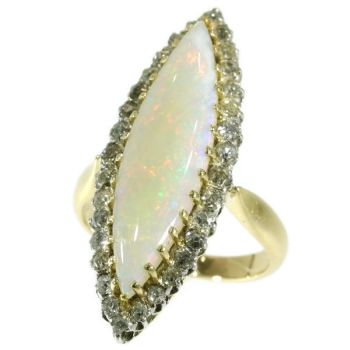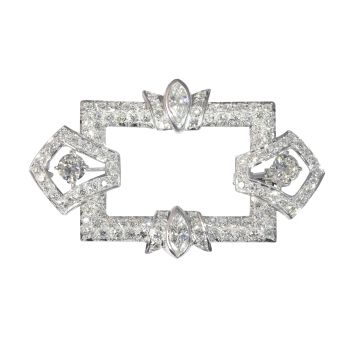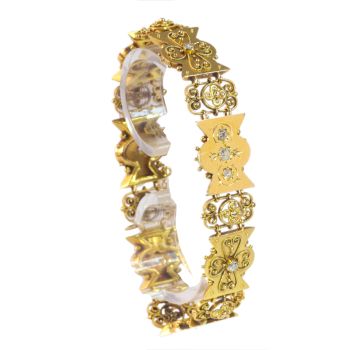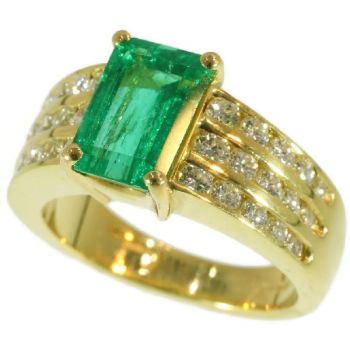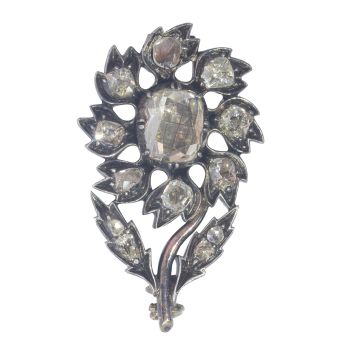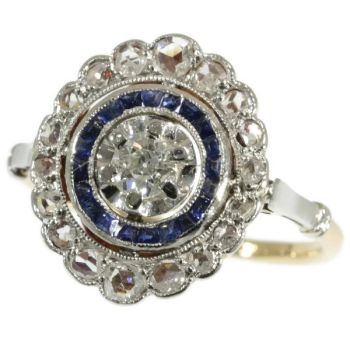An Heirloom to Cherish: Victorian Pendant with Rare Fancy Diamonds 1860
Artista Desconhecido
DiamanteOuroPérolaGemstone
€ 8.500
Adin Fine Antique Jewellery
- Sobre arte
A striking example of Grand Victorian craftsmanship, this pendant, crafted in 18K red gold, features a delicately suspended central element adorned with three fancy brown diamonds, evoking a sense of timeless elegance. Above them, a charming fancy yellow diamond completes the composition, adding a subtle touch of romance. Set with an additional 31 old mine cut diamonds, the piece exudes opulence and sentimentality. The graceful curves, paired with a single drop pearl, bring forward the romantic andornate spirit of the Victorian era, allowing the wearer to feel deeply connected to the past, while creating new memories of their own.
Antique jewelry object group
pendant on chain
Condition
very good condition
more info on our condition scale
Country of origin
unknown
Style
Victorian - Victorian decorative arts refers to the style of decorative arts during the Victorian era. The Victorian era is known for its eclectic revival and interpretation of historic styles and the introduction of cross-cultural influences from themiddle east and Asia in furniture, fittings, and Interior decoration. Victorian design is widely viewed as having indulged in a regrettable excess of ornament. The Arts and Crafts movement, the aesthetic movement, Anglo-Japanese style, and Art Nouveaustyle have their beginnings in the late Victorian era.
See also: Victorian
more info on styles
Style specifics
The Grand Victorian Period - Experts divide the reign of Queen Victoria, also called The Victorian era (1837 - 1901) into three periods of about twenty years each; The Romantic Victorian Period (1837 - 1860), The Grand Victorian Period (1860 - 1880),and the Late or Aesthetic Victorian Period (1880 - 1901).
We consider this to be of the Grand Victorian Period.
This second Victorian period is famous for its ostentatious pieces set with pearls and diamonds (from South Africa). From ca. 1850 wealthy English had reported about jewelry from India and Japan, which heavily inspired the jewelers of this period. Thisperiod also corresponds with the death of Queen Victoria's husband King Albert making mourning jewelry (set with heavy dark stones) the type of jewelry specific for this period.
Period
ca. 1860
Events & facts of this era, poetry of this era, fashion of this era.
Material The pendant is 18K
red gold and the chain is 18K yellow gold (touchstone tested)
more info on precious metals
Extra information
The chain is of a more recent date than the pendant. This is not uncommon for a jewel over 100 years old, as chains are naturally subject to wear through regular use.
Diamonds
1 old brilliant cut diamond with an estimated weight of ± 0.02ct, colour fancy yellow, clarity si/i
Three old mine brilliant cut diamonds with an estimated weight of ± 0.30ct, colour fancy brown, clarity si
31 old mine brilliant cut diamonds with an estimated weight of ± 1.84ct colour and clarity F/H, vs/si
Total diamond count
35 pcs.
Total diamond weight
approx. 2.16 crt
- When we provide weights, colour grades, and clarity of diamonds, these are approximate unless otherwise stated, as we do not remove diamonds from their settings to preserve the integrity of the piece.
- All diamonds, regardless of their size or shape, in our vintage and antique jewellery are verified as 100% natural by the IJGC laboratory.
- We do not sell lab-grown (synthetic) diamonds.
Precious stones
One drop pearl
Birthstones
Diamond is the birthstone (or month stone) for April and pearl for June.
more info on birthstones
Hallmarks
No trace.
more info on hallmarks
Dimensions
pendant 4,48 cm (1,76 inch) x 2,82 cm (1,11 inch), length necklace 42,50 cm (16,73 inch)
see picture with a ruler in millimeters and inches
Weight
9,50 gram (6,11 dwt)
Adin Reference Nº
24263-0291
Copyright photography
Adin, fine antique jewellery
Additional information
our latest acquisitions
jewelry glossary
wall of fame
visit us in Antwerp
subscribe to our mailinglist
- Sobre artista
Pode acontecer que um artista ou criador seja desconhecido.
Algumas obras não devem ser determinadas por quem são feitas ou são feitas por (um grupo de) artesãos. Exemplos são estátuas dos tempos antigos, móveis, espelhos ou assinaturas que não são claras ou legíveis, mas também algumas obras não são assinadas.
Além disso, você pode encontrar a seguinte descrição:
•"Atribuído a …." Na opinião deles, provavelmente uma obra do artista, pelo menos em parte
• “Estúdio de…” ou “Oficina de” Em sua opinião um trabalho executado no estúdio ou oficina do artista, possivelmente sob sua supervisão
• "Círculo de ..." Na opinião deles, uma obra da época do artista mostrando sua influência, intimamente associada ao artista, mas não necessariamente seu aluno
•“Estilo de…” ou “Seguidor de…” Na opinião deles, um trabalho executado no estilo do artista, mas não necessariamente por um aluno; pode ser contemporâneo ou quase contemporâneo
• "Maneira de ..." Na opinião deles, uma obra no estilo do artista, mas de data posterior
•"Depois …." Na opinião deles uma cópia (de qualquer data) de uma obra do artista
• “Assinado…”, “Datado…” ou “Inscrito” Na opinião deles, a obra foi assinada/datada/inscrita pelo artista. A adição de um ponto de interrogação indica um elemento de dúvida
• "Com assinatura ….”, “Com data ….”, “Com inscrição ….” ou “Tem assinatura/data/inscrição” na opinião deles a assinatura/data/inscrição foi adicionada por outra pessoa que não o artista
Você está interessado em comprar esta obra de arte?
Artwork details
Related artworks
- 1 - 4 / 12
- 1 - 4 / 24
- 1 - 4 / 24
- 1 - 4 / 24
- 1 - 4 / 12








